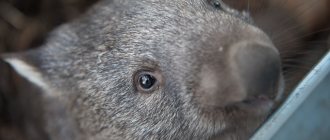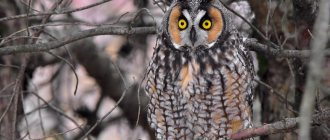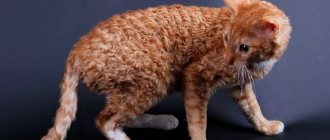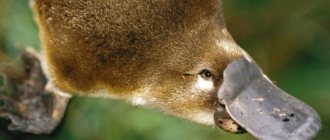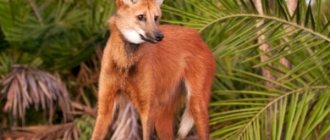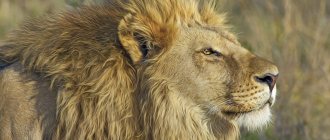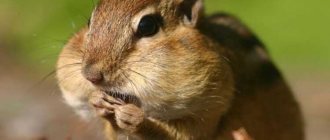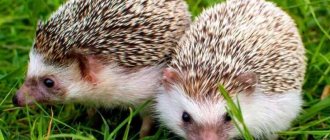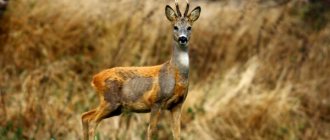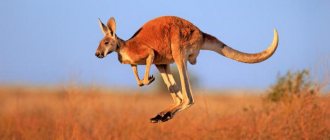The results of an examination of the remains of an ancient animal found during an expedition of the Russian Geographical Society in 2005 have become known. A modern man could date a unicorn! Scientists have found that the so-called “Siberian unicorns” - Elasmotherium - died out not 200 thousand years ago, as was long thought, but about 35 thousand years ago. By that time, people had already spread to the territories of modern Russia, Kazakhstan, Mongolia and China. What did unicorns really look like, how did they live next to people and why did they become extinct? About this in our report.
elasmoteriy_foto_2.jpg
Photo from animaljournal.ru
The fairy tale is a lie, but there is a hint in it...
The unicorn exists in the myths of all peoples and all cultures. It would be strange if scientists did not doubt: what if he once really lived?
Images of a one-horned bull can be found on cultural monuments of the 3rd millennium BC, in particular on seals from the ancient cities of the Indus Valley. According to the flood myth set forth in Hinduism's sacred text, the Atharva Veda, the king of men, Manu, tied his ship to the horn of a unicorn.
lady_with_unicorn_by_rafael_santi.jpg
“Lady with a Unicorn” by Rafael Santi
But more often the unicorn was depicted as a horse rather than a bull. Drawings of a unicorn resembling an antelope can be found on ancient Assyrian bas-reliefs, ancient Egyptian monuments and on the rocks of South Africa. In the 5th century BC. The Greek Ctesias, who served as a doctor at the Persian court, described wild Indian donkeys with a horn on their forehead from hearsay. According to him, anyone who drinks water or wine from the horn of this animal will never be susceptible to disease. The story of Ctesias has reached our time only in retellings and is most fully preserved by the Roman writer of the 2nd–3rd centuries AD. Claudia Eliana.
“I found out through questioning that the wild asses found in India are as big as horses. This animal is completely white, except for the head, which is reddish in color, while the eyes reflect azure. It has a horn on its forehead one and a half cubits long. This horn is white at the base, dark red at the tip and black in the middle. These multi-colored horns, as far as I know, are used by the Indians for drinking, but not in fact by people of all classes, but only by the noble ones, who border them with gold bracelets, as if they were decorating the hand of some beautiful statue. They say that whoever drinks from such a horn will receive protection from all incurable diseases, he will not suffer from convulsions, nor what is called the sacred disease - epilepsy, and the poison will not destroy him ... "
Elian. About the nature of animals
Epochs changed, but people continued to stubbornly believe in unicorns. In medieval legends, wizards and sorceresses rode a fabulous one-horned horse. The unicorn was the emblem of the Virgin Mary, as well as the holy virgin martyrs Justina of Padua and Justina of Antioch. In the Moscow state, the unicorn became a symbol of book learning; its image adorned the façade of the Printing House on Nikolskaya Street.
One biblical myth says that one day God was angry with people for their sins and decided to send a Great Flood on them. He warned only one righteous man, Noah, about this. To save his family and the “sinless” animals, Noah had to build a large ark. I collected a pair of each creature into the ark. Only one giant beast could not fit on board. He was forced to swim behind the ark ship, sometimes leaning on the stern with his huge horn. Scientists have proven that in biblical myths, along with fiction, sometimes details that took place in reality were also reflected, and in the story of the flood specific animals were named.
The collapse of the myth
Slender, graceful, willful - this is how unicorns are usually portrayed. For us, “the land of unicorns” is synonymous with a world of sublime fantasy and magic. But scientists’ research brings them back to earth: the appearance of real creatures is far from our imagination.
The first skeleton was discovered in 1900. This became a sensation in world science. Paleontologists called it "Elasmotherium sibiricum" - a folded animal of Siberia. A huge horn protruded from the forehead of his massive skull, like a rhinoceros.
Elasmotherium are prehistoric equid herbivores that lived in Eastern Europe and Western Siberia. Their remains were first discovered by archaeologists in the 19th century. Elasmotherium had gigantic sizes - up to 5 meters in length and 2.5 meters in height. Weight was 3.5 tons. Only mammoths were larger than them. The main feature of Siberian unicorns was the presence of one horn growing directly from the forehead. Its diameter was more than 20 centimeters. It was probably used for self-defense and to gain access to food and water.
Later, Elasmotherium skulls and teeth were found in the European part of the USSR. Two huge skulls of this monster are kept in the Geological Museum of Kazan State University.
Appearance and features
Photo: Rhino Elasmotherium
Elasmotherium is a large representative of its genus. Their body length reached 6 m, height - 2.5 m, but despite their dimensions, they weighed significantly less than their current counterparts - from 5 tons (for comparison, the average height of an African rhinoceros is one and a half meters).
The thick, long horn was not located on the nose, as in modern rhinoceroses, but grew from the forehead. The difference between this horn is also that it was not fibrous, consisting of keratinized hair - it was a bone outgrowth, the same in structure as the tissue of the skull of Elasmotherium. The horn could reach a length of one and a half meters with a relatively small head, so the rhinoceros had a strong neck, consisting of thick cervical vertebrae.
Elasmotherium had a high withers, reminiscent of the hump of modern bison. But while the humps of bison and camels are based on fat deposits, the withers of Elasmotherium were supported by bony outgrowths from the spine, although it contained fat deposits.
The back of the body was much lower and more compact than the front. Elasmotherium had rather long slender legs, so it can be assumed that the animal was adapted to a fast gallop, although with such a body constitution running is energy-consuming.
Interesting fact: There is a hypothesis that it was Elasmotherium that became the prototype of mythical unicorns.
Another distinctive feature of Elasmotherium is that it was completely covered with thick hair. It lived in cold areas, so the fur protected the animal from rain and snow. Some species of Elasmotherium had less dense fur than others.
giganty-doby-ladovej-1-_2.jpg
Photo from the website bratislava.dnes24.sk
In Bashkiria, the first discovery of the remains of a unicorn belongs to schoolchildren in the village of Tlyaumbetova, Meleuzovsky district: they discovered a tooth of this animal on the sandy bank of the Nakaz River. Later, in 1928, guys from the village of Nordovka, Sterlitamak region, found another tooth and donated it to the Sterlitamak Museum of Local Lore. The third Elasmotherium tooth was found by residents of the Pugachevskaya Sloboda suburb of Ufa. They saw him on the shallows of the Ufa River, near its mouth.
But all these finds did not allow us to draw an unambiguous conclusion: when did ancient unicorns live and what did they look like? In 2005, a group of scientists led by paleontologist Pavel Kosintsev discovered many bones and one giant tooth in a cave in the Southern Urals. It was possible to determine that the bones belonged to hyenas, and the tooth belonged to a Siberian unicorn. Elasmotherium probably became prey for predators.
“In the layer they found a lot of bones of cave hyenas, mammoths, horses and bison. And one unusual tooth. I immediately realized: this is not a mammoth or a woolly rhinoceros,” said expedition member, archaeospeleonologist, member of the Russian Geographical Society Vladimir Yurin.
Social structure and reproduction
Photo: Elasmotherium
Scientists believe that Elasmotherium reached sexual maturity at about 5 years. If the Indian rhinoceros rutting occurs approximately once every month and a half, then among Elasmotheriums living in cold regions, it could occur once a year with the arrival of warmth. The rhino race occurs as follows: females leave their group for a while and go out in search of a male. When she finds a male, they stay next to each other for several days, the female follows him everywhere.
If during this period the males may clash in the fight for one female. It is difficult to assess the character of Elasmotherium, but it can be assumed that they were also phlegmatic, clumsy animals that were reluctant to enter into conflicts. Therefore, the battles for the female were not fierce and bloody - the larger rhinoceros simply drove away the smaller one.
The pregnancy of the female Elasmotherium lasted approximately 20 months, as a result of which the baby was born already strong. The remains of the cubs were not found as a whole - only individual bones in the caves of ancient people. From this we can conclude that it was the cubs of Elasmotherium that were more often exposed to danger from primitive hunters.
The lifespan of elasmotheriums reached one hundred years, and many individuals lived to old age, since initially they had very few natural enemies.
elasmoteriy_nosorog.jpg
Photo from animaljournal.ru
To establish the exact date of death of the animal to which the tooth belonged, archaeologists sent a fragment of the find to the Netherlands for radiocarbon dating using accelerator mass spectrometry. It turned out that one-horned giants grazed in the Urals about 35 thousand years ago. At that time, the Siberian unicorn was the last representative of its once large and quite diverse group. And at this time people lived in the territory of Siberia and the Urals. Did people hunt unicorns? Perhaps, scientists say. But it has not yet been possible to find remains with traces of arrows or spears.
In addition, scientists - this time from Australia - were able to isolate the DNA of a unicorn and found out that its closest relatives are tapirs - funny herbivorous animals with a small trunk. Experts also concluded that the branches of Elasmotherium rhinoceroses and the rhinoceros subfamily itself diverged 40–50 million years ago and have since evolved independently.
It is assumed that the giants could have died out due to lack of food. Analysis of Elasmotherium bones showed that unicorns fed only on grass, while other species began to switch to shrubs and leaves.
What did Elasmotherium eat?
Photo: Siberian Elasmotherium
From the structure of their teeth, it can be concluded that Elasmotherium fed on tough grass that grew in lowlands near water - abrasive particles were found in the remains of the teeth, which indicate this point. Elasmotherium ate up to 80 kg of grass per day.
Since Elasmotherium are close relatives of the African and Indian rhinoceroses, we can conclude that their diet includes:
- dry ears;
- green grass;
- tree leaves that animals can reach;
- fruits falling from trees to the ground;
- young shoots of reed;
- bark of young trees;
- in the southern areas of habitat - leaves of vines;
- Based on the structure of the teeth, it is clear that Elasmotherium ate reed plants, green mud and algae, which it could get from shallow reservoirs.
The structure of the lip of Elasmotherium is similar to the structure of the lips of Indian rhinoceroses - it is one elongated lip, designed for eating long, tall plants. African rhinoceroses have wide lips, so they feed on short grass.
Elasmotherium plucked tall ears of grass and chewed them for a long time; his height and the structure of his neck allowed him to reach low trees, tearing leaves from there. Based on the weather, Elasmotherium could drink from 80 to 200 liters. water per day, although these animals are hardy enough to live without water for a week.
elasmoteriy.jpg
Photo from animaljournal.ru
Questions remain...
However, the accelerator mass spectrometry method could produce an error. “This method is a pretty insidious thing. It is accurate, but does not work with objects older than 40 thousand years. Therefore, the materials need to be checked by other methods, to understand whether they give the same dating or not,” said Evgeniy Mashchenko, senior researcher at the Laboratory of Mammals of the Paleontological Institute of the Russian Academy of Sciences, Candidate of Biological Sciences. – For example, on the Russian Plain there are a number of sites of ancient human sites. The accelerator mass spectrometry method showed that the age of the finds at the site reaches 35 thousand years, other methods gave results from 70 to 100 thousand years.”
Evgeny Mashchenko also noted that even if the age of the Siberian unicorn is about 35 thousand years, it is unlikely that it met a person. “I think this species became extinct before humans spread widely in Central Asia,” the scientist concluded.
Natural enemies of Elasmotherium
Photo: Rhino Elasmotherium
Elasmotherium is a large herbivore that can fend for itself, so it did not face serious danger from predators.
In the late Pliocene, Elasmotherium encountered the following predators:
- glyptodont is a large representative of the cat family with long fangs;
- Smilodon - the smaller of the cats, hunted in packs;
- ancient species of bears.
During this period, Australopithecines appeared, which gradually moved from gathering to hunting large animals, which could have decimated the rhino population.
In the late Pleistocene period it could have been hunted by:
- bears (both extinct species and existing ones);
- giant cheetahs;
- packs of hyenas;
- prides of cave lions.
Interesting fact: Rhinoceroses reach speeds of up to 56 km/h, and since Elasmotherium had relatively less weight, scientists believe that its galloping speed reached 70 km/h.
The size of the predators corresponded to the size of the herbivores, but Elasmotherium still remained a very large prey for most hunters. Therefore, when attacked by a pack or a single predator, Elasmotherium preferred to defend itself using a long horn. Only cats with long fangs and claws could bite through the thick skin and fur of this rhinoceros.
skeleton.jpg
Photo from the website of the Stavropol State Historical, Cultural and Natural Landscape Museum-Reserve named after. G.N. Prozritelev and G.K. Right (museum.ru/M1413)
You can see the skeleton of the Siberian Elasmotherium in Moscow in the hall of mammals of the museum of the A.A. Paleontological Institute. Borisyak RAS. The skeleton of the animal is also presented in the Stavropol Museum of Local Lore in Stavropol. However, visitors to the exhibition will not be able to look at the animal’s horn: the horn is organic matter, which, unfortunately, is not preserved.
Paleozoologists are sure: unicorns are not the only legendary animals that actually existed.
Top 5 Mythical Animals That Probably Lived on Earth
1. The Kraken is a sea monster known from descriptions of Icelandic sailors. The first report on the kraken was compiled by the Danish naturalist Eric Pontoppidan, Bishop of Bergen (1698–1774). He wrote that the kraken is an animal the size of a floating island and with its tentacles can pull an entire ship to the bottom.
Thylacine
Currently, the Australian island of Tasmania is known primarily for Tasmanian devils, creepy mammals that are endemic to the island. But until relatively recently, another interesting species lived in Tasmania - the Thylacine, which is also called marsupials, these are Tosmanian wolves. This is an extinct marsupial mammal, the only one that survived to the historical era, a representative of the family of marsupial wolves. The last wild marsupial wolf was killed on May 13, 1930, and in 1936, the last marsupial wolf kept in captivity died of old age in a private zoo. Despite the fact that the species has seemingly disappeared forever, scientists believe that they are able to revive it. In 1999, the National Australian Museum in Sydney announced the start of a project to create Thylacine clones using DNA from puppies of this animal, which were preserved in the museum in alcoholic form. In late 2002, scientists led by Michael Archer extracted DNA from the puppies, but the samples were damaged and unusable, causing the project to be stopped. In 2008, the project was relaunched, when scientists managed to get some marsupial wolf genes to work in a mouse embryo. The source of the genetic material was a marsupial predator cub preserved in alcohol, which has been kept in the Sydney Museum for more than a century. It is likely that scientists will eventually be able to resurrect the Thylacine, even if it takes hundreds of attempts.
edgar_etherington.jpg
Painting by Edgar Etherington
Giant squids may still exist today. In the oceans there are individuals up to 16 meters long. Huge tentacles make up the bulk of their length. It is possible that several centuries ago these animals terrified sailors.
2. Basilisk is a poisonous snake that can kill with just a glance. In the 1st century, Pliny the Elder described the basilisk as a small snake up to 30 centimeters long with a white spot on its head. Guy Julius Solinus wrote about the basilisk in approximately the same way in the 3rd century. In the Middle Ages, the image of the basilisk began to be supplemented with new terrifying details: wings, claws, beak, crown.
Tour
The aurochs is an extinct artiodactyl mammal that was domesticated by ancient settlers of India and Eurasia for about 10,000 years. The aurochs is considered one of the ancestors of all modern cattle; unfortunately, this important, from a historical point of view, species was declared extinct in the 17th century AD, when the last individual died of disease. Currently, scientists are planning to resurrect the aurochs by backcrossing primitive breeds of European cattle, they plan to cross breed similar individuals to the aurochs until they produce an animal as close as possible to the aurochs. Despite the fact that a tour designated in this way will not be identical to the extinct one, according to scientists, there will be very few differences. It is noted that the chances of a successful experiment are very high, since in the twentieth century, as part of a similar company to revive the aurochs, the Heck bull was bred from modern breeds of domestic bull derived from the aurochs. That experiment was partially successful, so the modern experiment may well take place.
izobrazhenie_vasiliska_iz_knigi_aldrovandi_istoriya_zmey_i_drakonov.jpg
An image of a basilisk from Ulysses Aldrovandi’s book “The History of Snakes and Dragons”
It is possible that the image of the basilisk is based on some types of snakes. For example, a cobra fits its description. Her ability to spit venom can be interpreted as killing at a distance. According to another version, the basilisk is a horned viper. Her image with horns was the Egyptian hieroglyph "f" and could be mistaken for a snake with a crown.
3. Griffins are mythological winged creatures with the body of a lion and the head of an eagle. They have sharp claws and snow-white or golden wings. The role of griffins in myths is ambiguous: they can act as protectors, patrons, and as evil animals. For the first time, images of griffins are found on the frescoes of Crete of the late Minoan period of the 16th–12th centuries BC, as well as in Ancient Egypt and Ancient Persia. But they became most widespread in the art of the ancient Greek world.
Causes of extinction
Scientists believe that one of the main reasons for the extinction of ancient rhinoceroses is the onset of warming. As the average annual temperature increased, humidity increased, more snow fell, and woolly rhinoceroses could not get food from under its thick layer. In addition, they often died in natural traps - under-ice holes that appeared due to warming. Herbaceous vegetation was replaced by forests, which led to a reduction in the animal's food supply. Primitive people who hunted woolly rhinoceroses could also have played an important role in the disappearance of the ancient beast.
grifon_gryzushchiy_listok_svyashchennogo_dereva._slonovaya_kost.jpg
Tablet with the image of a griffin, 8th century BC.
e. Some scientists suggest that the image of the griffin was partly inspired by the stories of the Scythian gold miners of Altai, who could observe the fossilized bones of protoceratops dinosaurs in the sands of the Gobi Desert. The description of the griffin is quite applicable to these fossil skeletons: the size of the animal, the presence of a beak, the occipital collar, which is capable of splitting and creating the illusion of ears and wings.
4. Dragons are huge fire-breathing lizards. The first mentions of them date back to the Sumerian culture of the 4th–3rd millennia BC. In folk art, there are different types of dragons - European, living in the mountains, Chinese, similar to snakes. The mythological dragon symbolizes the test that must be passed in order to obtain the treasure.
Lifestyle
The animals led a solitary lifestyle, forming pairs only during the mating season. Males competed for the attention of females, arranging clashes in which they used horns. The pregnancy of woolly rhinoceros females lasted about one and a half years, ending with the birth, as a rule, of two cubs. Males did not care about offspring. Young rhinoceroses lived with their mothers from the moment of birth from several months to two years. The total lifespan of the woolly rhinoceros was about 40–45 years.
Woolly rhinoceroses lived in areas with a dry, cold climate. There was little snowfall - its cover rarely exceeded 20–25 cm.
The animal ate mainly herbaceous plants and cereals; the diet included small amounts of mosses and young branches of bushes or trees. When necessary, the woolly rhinoceros used its front horn to tear up the snow to get to food.
Share link
sculpture-213822_960_720.jpg
Photo from pixabay.com
In reality, myths about dragons most likely originated from crocodiles or dinosaur fossils. A person could also confuse Magalania, the largest land lizard known to science, with a dragon. She lived in Australia during the Pleistocene era. The length of megalania reached 9 meters, and its weight was 2200 kg.
5. Cyclops – one-eyed giants. According to one of the versions, reflected in Homer’s Odyssey, the Cyclops made up an entire people. Among them, the most famous is the ferocious son of Poseidon, Polyphemus, whom Odysseus deprived of his only eye. The Scythian people of the Arimaspa were also considered one-eyed. The word "arimasp" means "one-eyed" in Scythian. There is also an image of a Semitic one-eyed demon from Arslan-Tash.
Carolina parrot
The Carolina parrot is a bird of the parrot family that lived in North America until it was exterminated by hunters, as a result of which the genus was declared extinct. The reason for the extermination can be understood, but cannot be accepted, since it is terrible in any case. Poachers hunted Carolina parrots for their incredibly beautiful feathers, which at that time were used in the production of expensive ladies' hats. The demand for such hats led to the fact that in 1939 the Carolina parrot was declared a completely extinct species. However, work is currently underway to revive these wonderful birds. Scientists have sequenced Carolina parrot DNA from eggshell fragments stored at the New York State Museum. Geneticists plan to try to use the female black-headed parrot Nandaya as a surrogate mother. And although the intentions of scientists are good, many people rightly believe that after the revival of parrots, history with their extermination may repeat itself.
ciklopy_kartina_odilona_redona.jpg
Painting by Odilon Redon
In 1914, paleontologist Othenio Abel suggested that the discovery of dwarf elephant skulls gave rise to the myth of the Cyclops, since the central nasal opening in the elephant's skull could be mistaken for a giant eye socket. It is curious that these elephants were found precisely on the Mediterranean islands.
Scientists believe that in the near future, gene editing technology will make it possible to resurrect extinct species of animals, or rather, to cross their DNA with modern ones. Then unicorns, mammoths and dinosaurs can be seen not only in paleontological museums.
Anna Sokolova
What happened?
“Siberian unicorns” among contemporary land mammals were second in size only to mammoths - the weight of the animals reached 3.5 tons. Previously, scientists believed that elastomers became extinct about 200 thousand years ago. At the initiative of the Ural paleontologist Pavel Kosintsev, an international team of researchers determined the age of late finds of Elasmotherium bones using high-precision radiocarbon dating.
It turned out that “unicorns” survived the Mikulino interglacial (130–120 thousand years ago), continued to be found in the late Pleistocene in Eastern Europe and Central Asia, and finally became extinct 39 thousand years ago or even later. It turns out that “unicorns” were contemporaries of humans, Neanderthals and Denisovan man.
©Igor Doronin/nhm.ac.uk
